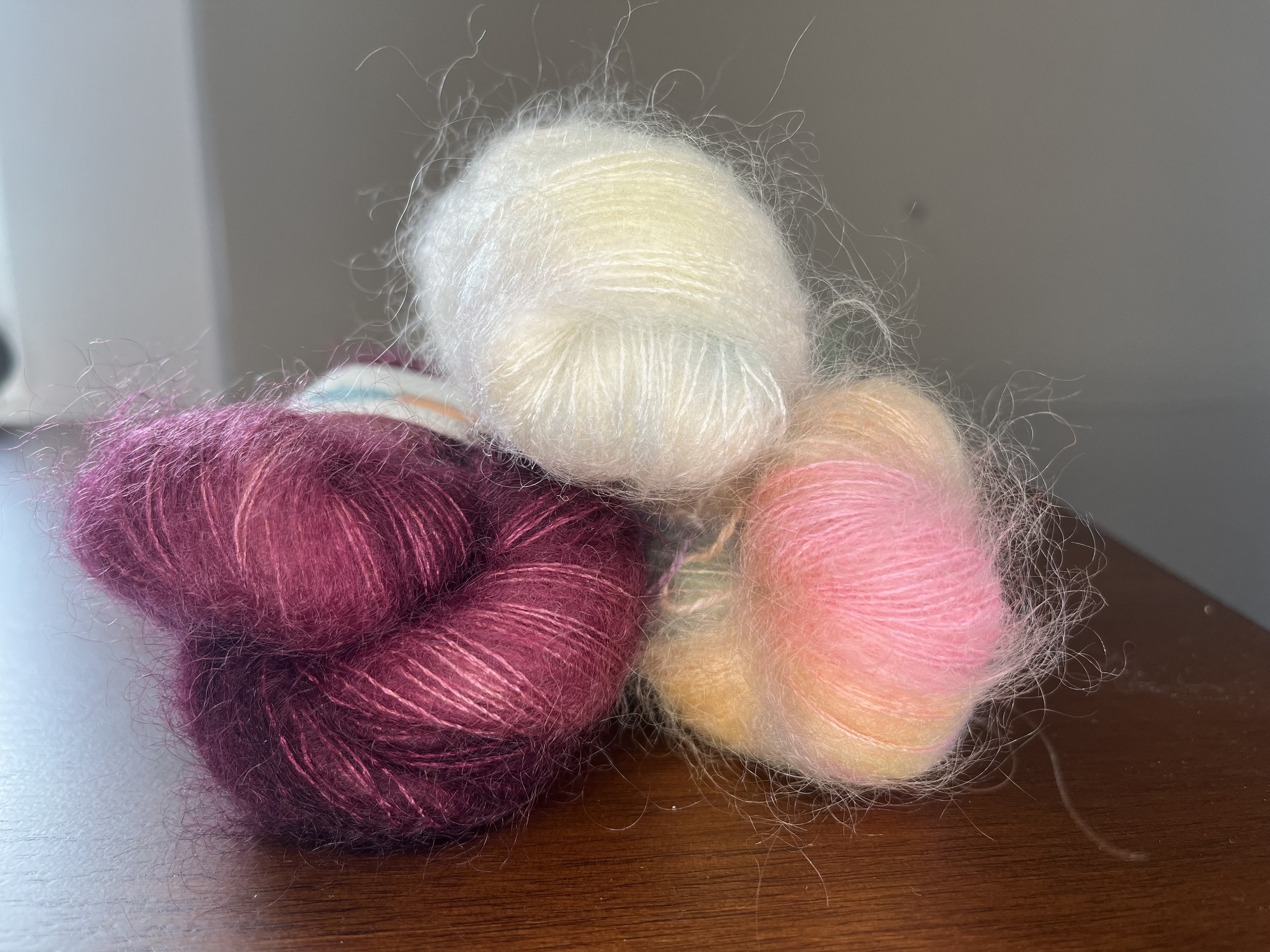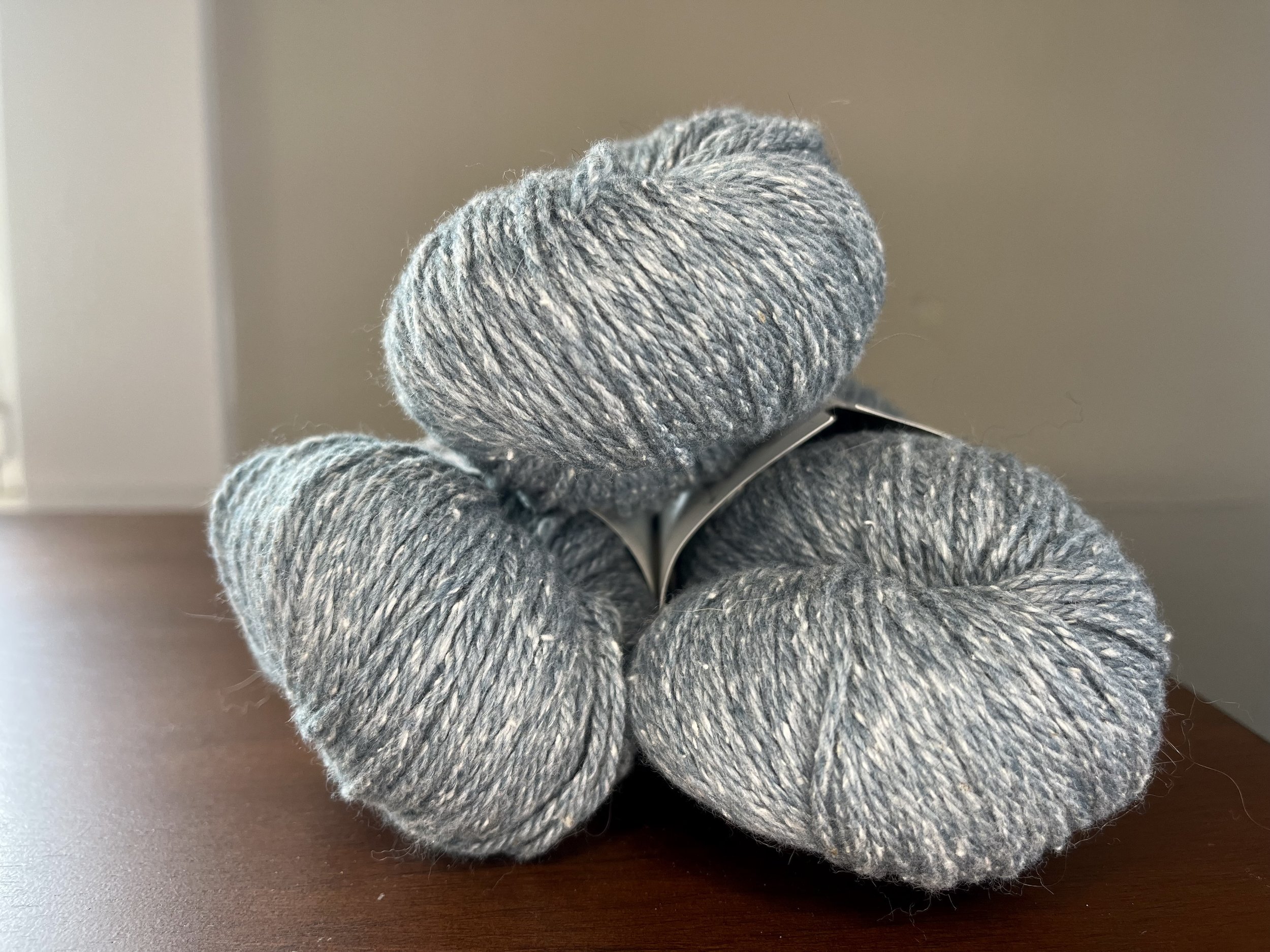How to Pick Yarn for any Project
Yarn is wonderful. It’s comfy, colorful, fun and you can never have too much. Most experienced knitters have a stash of yarn, with some specific projects in mind.
The goal of this tutorial is to equip you with enough knowledge of the main yarn characteristics so that you can pick the perfect project from your stash yarn and be more discerning when selecting new yarn.
The yarn types discussed in this article are wool, cashmere, silk, alpaca, cotton and linen. Note that cashmere, silk, and alpaca are often blended with wool. Each yarn type section will include links to a couple example patterns that have been selected with the yarn characteristics in mind.
Finally, this article will provide some guidance on how to apply the concepts when you read yarn labels.
Yarn Options
Wool, mohair, cashmere, silk, and alpaca are protein fibers, they are produced by an animal. It is common to find yarns that are 100% wool, however, the other fiber types are often blended. Cotton and linen are categorized as vegetable fibers, they are produced from plants. You can find yarns that are a blend of both or 100%. Blending is an excellent method for mitigating unfavorable characteristics of one fiber with favorable characteristics from another.
Wool
Wool is the most popular yarn type for a good reason; it’s durable, elastic, light, and breathable. It is also accessible, it can easily be found in any thickness and any price point. Because of this, you can knit anything with wool, however there are a few varieties that are better suited for different garments.
Merino and Rambullot are the softest varieties. You should consider using them for sweaters, hats, mittens, socks, anything that is worn close to the skin. If these varieties are still irritating, try a merino cashmere blend. A Verb For Keeping Warm has several lovely yarns that are a blend of wool, cashmere, and silk.
Two less common varieties that are great alternatives are corriedale and targhee. Recently, I used Brooklyn Tweed's Arbor (targhee) for the Sacred Sheep hat. It was incredibly nice to work with and the hat is very comfortable.
The light blue yarn on top is a 100% merino wool, single ply yarn. The bottom two are 100% targhee wool, 3 ply worsted spun yarn.
Mohair
Mohair has many of the same characteristics as wool, although a single strand of mohair is not as elastic. Even though it seems so delicate it is actually very durable. You will most often find mohair as a lace weight blend of kid mohair and silk. Knitwear designers will include mohair held together with wool yarn to create a fuzzy halo or for extra durability. Depending on the blend, it can also add a softness. The mohair edition of the Oslo hat is a great example and a good practice project for holding two yarns together. Mohair can be added to any garment, but works best with sweaters, hats, and shawls. Because of the fuzziness, it can reduce the clarity of fine detailed colorwork projects.
Even though it is nice to hold mohair with another yarn, it will compress it and cause some of the fluffiness to flatten. To get the full effect, try making a shawl, kerchief, or breezy shirt with just mohair. Two small and engaging projects are the Blackberry kerchief by Churchmouse yarns and Ghost Whisperer top by Park n Knit.
All three yarns are a blend of kid mohair and silk. Notice that they all have long strands of fuzz.
Silk
Silk is super strong, soft, shiny, and lightweight. Although it is elastic like wool, it will not noticeably shrink or stretch. However, it is not common to find pure silk yarn at a yarn shop. You will most commonly encounter silk when it’s blended with mohair or alpaca to fuzzy lace weight yarn or to soften wool yarns.
This yarn is a blend of 50% silk and 50% merino wool. Notice the sheen from the silk, best seen along the edges.
Cashmere
Cashmere is incredibly soft, but not durable like wool. It is delicate and should be gently worn when using full cashmere yarn or a blend that is a high percent cashmere. Hats, scarves, and other small items are good projects. If you can find a blend of wool and cashmere, then you will not need to be as concerned about durability since wool is durable.
The Change your Mind Beanie with the Floating yarn from A Verb for Keeping Warm is a wonderful blended yarn that makes for an extra soft hat.
Alpaca
Alpaca varies from wool on a few key characteristics. It is heavier, which will create a more drapey fabric. The fiber attributes make it less likely to pill and warmer than wool. Despite these differences, Alpaca is still suitable for any garment type. The only consideration would be for a large project, a big shawl or sweater, with a thicker weight yarn would be more likely to droop.
It is common to find alpaca blended with wool or baby suri alpaca with silk for fuzzy lace weight.
This yarn is a blend of alpaca and merino wool.
This yarn is Suri alpaca and silk, lace weight.
Cotton
Like all vegetable fibers, cotton helps pull heat away from the body. It is a great choice for summer knits or any project that you do not want a very warm garment. Cotton also has two major differences from wool that will create a very different garment. First, it is heavy and will droop. Second, the fiber itself does not have elasticity and will stretch out of shape.
Despite these differences, cotton is still used for many types of garment, typically anything other than a sweater. It is a particularly good choice for childrens garments because they aren’t meant to last years and cotton can feel much less irritating to the skin. It is also a good choice for summer tanks and tops for adults. Other than garments, it is also good for toys, small towels and clothes.
This yarn is a blend of 50% cotton and 50% merino wool.
Linen
Linen is unique, its defining characteristic is that its fiber attributes allow it to become softer and smoother with age. It is also able to age well because it is a very strong fiber. Linen garments are very comfortable, especially when knit in thinner weight with an airy pattern. The Dappled Lace Raglan by James Watts and Outline Tank by Jessie Maed Designs are two good examples. Note that both these patterns also work well with linen cotton blends.
When making linen garments, it’s important to note that it does not shrink or stretch.
This yarn is a blend of 50% linen and 50% cotton.
Conclusion
Now that you know the main characteristics of many of the natural fiber types, you can apply that knowledge to yarn labels.








